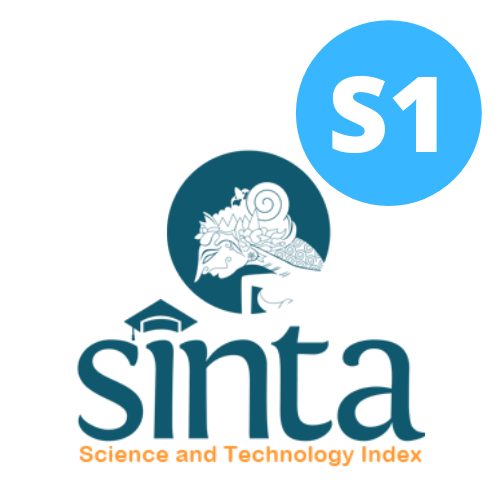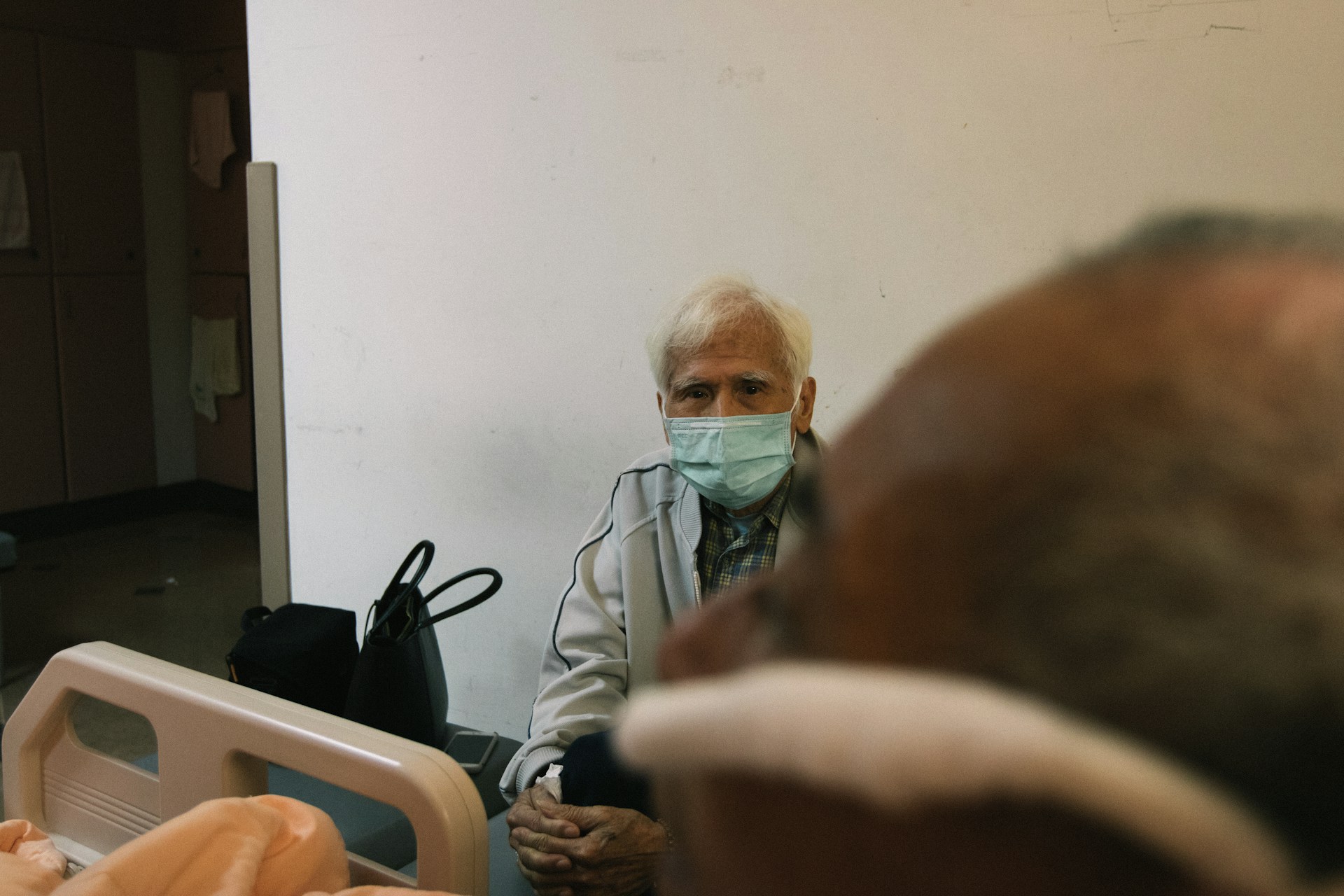The Stunting Determinants in Toddlers from Landak Regency, West Kalimantan: A Cross-Sectional Study
Determinan Balita Stunting di Kabupaten Landak, Kalimantan Barat: Studi Potong Lintang

Downloads
Background: Stunting is a nutrition problem that can slow down the growth. With prevalence at 32.5%, Landak Regency in West Kalimantan has been designated as a stunting hotspot. The lack of a maximum penalty for the stunting case in Landak Regency is not based on factors causing the stunting itself, because there is no identifiable factor causing the stunting in certain area due to narrow roads and sharp curves.
Objectives: The objective of this study was to identify causes and distribution of the stunting case in Landak Regency.
Methods: A total of 330 households in Meranti, Sebangki, and Senakin were included in this cross-sectional study because they were at a risk of the stunting. Toddlers, mothers, health care, and environmental factors were among the found variables. The researchers employed a basic random sampling strategy for the sampling and used the secondary health center data to find out whether or not toddlers were stunted. Researchers in this study collected data on the independent variables by observing and interviewing participants. Using the chi-square test, the data was analyzed.
Results: The results showed that determinants of the stunting in Landak Regency were the history of early breastfeeding initiation (p-value=0.032), exclusive breastfeeding (p-value=0.042), frequency of exclusive breastfeeding (p-value=0.040), the continued breastfeeding (p-value=0.024), complementary feeding (p-value=0.042), immunization history (p-value=0.007), infectious disease history (p-value=0.000), maternal height (p-value=0.046), delivery assistance (p-value=0.000), access to health services (p-value=0.004), the role of health workers (p-value=0.002), and family latrine ownership (p-value=0.000).
Conclusions: Several factors were found to be associated with incidence of the stunting among toddlers in Landak Regency.
Ministry of Health of the Republic of Indonesia. The Results of Indonesian Nutrient Status Survey in 2022. Ministry of Health 1–150 (2022).
Ministry of Health of the Republic of Indonesia. 2018 Basic Health Research Report of the Ministry of Health of the Republic of Indonesia. National Report of Basic Health Research in 2018 vol. 53 154–165 (2018).
Firrahmawati, L., Khotimah, N. & Munawaroh, M. An Analysis of the Causative Factors Affecting the Stunting Incidence. Journal of Midwifery 12, 28–38 (2023).
Amalina, A., Ratnawati, L. Y. & Bumi, C. Relation among Consumption Water Quality, Hygiene, Household Sanitation, and the Stunting Incidence (A Case Control Study in the Stunted Toddler in the Lumajang Regency). Journal of Indonesian Environment Health. 22, 28–37 (2023).
Murti, L. M., Budiani, N. N. & Darmapatni, M. W. G. Relation of Mother’s Knowledge on Nutrient with the Stunted Child at the Age of 36-59 Months in Singakerta Village of Gianyar. Sci. J. 8, 63–69 (2020).
Andari, W., Siswati, T. & Paramashanti, B. A. Maternal Height as a Factor of the Stunting Risk in the Children at the Age of 24-59 Months in the Pleret and Pajangan Districts, Bantul Regency, Yogyakarta. J. Nutr. Coll. 9, 235–240 (2020).
Zubaidi, H. A. K. Height and the Smoking Behavior in Parent Potentially Lead to the Stunting in the Toddlers. J. Penelit. Perawat Prof. 3, 279–286 (2021).
Safinatunnaja, B. Relation between Maternal Height and the Stunting Incidence in the Children at the age of 6-23 Months. Journal of Health and Pharmaceutical Sciences. 7, 33–35 (2019).
Istiningsih, T. & Riyanti, R. Maternal Risk Factors against the Stunted Toddlers at the Age of 12-24 Months in Public Health Center of Mantangai District, Kapuas Province, Kalimantan. Malahayati Nurs. J. 4, 1828–1838 (2022).
Linda, N. H., Lestari, H. & Rabbani Karimuna, S. Relation among Exclusive Breastfeeding, History of Baby with Low Birth Weight, Protein Intake, and the Stunting Incidence in the Children at the Age of 12-36 Months in the Working Area of Public Health Center in Tumbu-Tumbu Jaya, East Kolono District, South Konawe Regency in in 2023. Journal of Nutrient and Health. Indones. 4, 137–141 (2023).
Karo, E. B., Putri, S. R. & Yolandia, R. A. Determinants of the Stunting Incidence in the Toddler at the age of 6-24 Months. Indones. J. Midwifery Sci. 1, 111–118 (2022).
Marchatus Soleha, Vivi Dwi Putri & Vika Tri Zelharsandy. An Analysis of the Effect from the Time of Colostrum Release towards the Physiological Jaundice Incidence in the Newborn. Lentera Perawat 4, 116–122 (2023).
Singarimbun, N. B. et al. Comparison between Baby Growth and Exclusive and Non-Exclusive Breastfeeding. J. Pharm. Heal. Res. 4, 64–68 (2023).
LINTANG, S. S. & AZKIYA, F. Relation between Early Initiation of Breastfeeding and the Stunting Incidence in Baby at the Age of 0-24 Months in the Kramatwatu Public Health Center in 2021. J. Midwifery 10, 155–160 (2022).
Pusung, B. L., Malonda, N. S. H. & Momongan, N. Relation among the History of Immunization, the Infectious Disease, and Nutrient Status in Toddler at the age of 24-59 Months in the Working Area of Touluaan Public Health Center, Southeast Minahasa Regency. J. KESMAS 7, 1–7 (2018).
Jamil, S. N. & Subiyatin, A. Relation between the History of Immunization and the Nutrient Status of Toddler. J. Smart Midwife 2, 132–138 (2020).
Safa Safira Ibta Putri, Sri Tirtayanti & Dewi Pujiana. Relation among the Exclusive Breastfeeding, Complementary Food for Breast Milk, and the Stunting Incidence. Mot. Journal of Health Sciences. 18, 7–13 (2023).
Utami, R. D. P. Patterns of Feeding, Exclusive Breastfeeding, Protein and Energy Intake, as the Causes of Stunting in Grogol Village, Ponorogo. Nursery Journal of Malang 5, 96–102 (2020).
Sengkey, A., Joseph, W. B. S. & Warouw, F. Relation among the Availability of Family Latrine , Household Waste Disposal, and Diarrheic Incidence in the Raanan Baru Village, West Motoling District, South Minahasa Regency. Journal of Public Health 9, 182–188 (2020).
Mamuroh, L., Sukmawati, S. & Nurhakim, F. Implementation of the Early Initiation of Breastfeeding by the Delivery Assistant. Journal of Health. Bakti Tunas Husada. Journal of Nursing Sciences, Health Analysis and Pharmacy. 21, 1 (2021).
Ibrahim, I. A. et al. Determinant Analysis of Growth Failure (Stunting) in Children aged 12-36 Months in the Mountains of the Village of Bontongan. Al-Sihah Public Heal. Sci. Journal 11, 50–64 (2019).
Shaputri, W. E. & Dewanto, N. E. Relation between Mother's Education and the Nutrient Status of Children from the age of 1 year and 6 months to 2 years in Sumber Waras Hospital. Hijp Heal. Inf. J. Penelit. 27, 58–66 (2023).
Kusumaningsih, N., Muharramah, A., Dian Khairani, M. & Abdullah. Relation between Early Initiation of Breastfeeding and the Stunting Incidence in Astra Village. Univ. Aisyah Pringsewu 6, 2023 (2023).
Ritanti, R. & Permatasari, I. Determinants of the Exclusive Breastfeeding Practice. Qual. J. Kesehat. 15, 77–83 (2021).
Pratama, M. R. & Irwandi, S.Relation between Exclusive Breastfeeding and the Stunting in Hinai Kiri Public Health Center, Secanggang District, Langkat Regency. J. Kedokt. STM (Sains dan Teknol. Med. 4, 17–25 (2021).
Yanti, A. P., Usman, A. M. & Widowati, R. Effects of the Exclusive Breastfeeding on Growth and Development of Babies at the age of 6 Months. Nurs. Insid. Community 4, 53–58 (2021).
Astuti, M. A. et al.The Effects of Exclusive Breastfeeding History on the Stunting Incidence in the Toddlers. 10, 35–39 (2024).
Purnami, L. A. et al. The Perception of Mother regarding the Advanced Breastfeeding (0-2 Years): A Phenomenological Study. NersMid 3, 1–6 (2020).
Kusumawati, E. & Sutriyani, T. Relation among Breastfeeding until the Age of 2 Years, Diet Pattern of Pregnant Mother, and the Growth of Child at the Age of 3 Years in Mojo Village, Kalitidu District, Bojonegoro Regency. J. Tribhuwana Tunggadewi University 5, 55 (2021).
Ahonen, J., Rankinen, K., Holmberg, M., Syri, S. & Forsius, M. Application of the SMART2 Model to a Forested Catchment in Finland: Comparison to the SMART Model and Effects of Emission Reduction Scenarios. Boreal Environ. Res. 3, 221–233 (1998).
Rohmani, A.Administration of the Complementary Food for Breast Milk on Children at the Age of 1-2 years in the Central Lamper Subdistrict, South Semarang District, Semarang City. Pros. Semin. Nas. Unimus 1, 81–87 (2018).
Merben, O. & Abbas, N. Relation between the Complementary Food for Breast Milk and the Diarrheic Incidence in Babies at the Age of 0-6 Years in the Working Area of the Cigudeg Public Health Center in 2023. J. Health Science. Bpi 7, 1–8 (2023).
Mayangsari, R., Sri, A., Kasma, R. & Yulia, A. Relation between the Age of Introduction to Complementary Food for Breast Milk on the Stunting Incidence in the Toddlers in Rangas Subdistrct, Banggae District, Majene Regency. Nutr. Sci. Heal. Res. 2, 14–20 (2023).
Riska, S., Mika, M. & Ririn, I. Relation between the Early Administration of the Complementary Food for Breast Milk with the Stunting Incidence in Toddler at the Age of 1-5 Years in Sumberjo Village, Kandat District, Kediri Regency. 91–99 (2019).
Eldrian, F., Karinda, M., Setianto, R., Dewi, B. A. & Guzmira, Y. H. Relation between the History of Infectious Disease and the Stunting Incidence in the Toddlers of the Cipadung Public Health Center, Bandung City. J. Health Management. 9, 80–89 (2023).
Aprilia, D. & Tono, S. F. N. The Status of Basic Immunization towards the Stunting Incidence and Disturbance in the Todder's Growth. J. Midwivery 12, 66–74 (2023).
Wanda, Y. D., Elba, F., Didah, D., Susanti, A. I. & Rinawan, F. History of the Basic Immunization Status Related to the Stunting Incidence in Toddlers. J. Midwivery of Malahayati 7, 851–856 (2021).
Yulnefia & Sutia, M. Relation between the History of Infectious Disease and the Stunting Incidence in Toddlers at the Age of 24-36 Months in the Working Area of Tambang Public Health Center, Kampar Regency. Jambi Med. J. 10, 154–163 (2022).
Dewi, Y. I., Agrina, A. & Erika, E. Description of Risk and the Stunting Prevention Efforts in the Pregnancy Period in the River Basin Area. J. Ners Indones. 13, 115–127 (2023).
Waryana, Rosyida, I. S., Iskandar, S. & Y. Maternal Height and the Stunting Incidence in the Working Area of Srandakan Public Health Center, Yogyakarta. Nutr. Diaita 14, 42–49 (2022).
Asarah, K., Ramadhaniah, Tahara, D. S. & M. Biomed. Relation among Health Service Access, Baby with Low Birth Weight, Exclusive Breast Milk, and the Protein Intake, and the Stunting Incidence in the Toddlers at the age of 6-59 Months in the Working Area of the Batussalam Public Health Center, Aceh Besar Regency in 2022. J. Heal. Med. Sci. 1, 171–177 (2022).
Indah, I., Firdayanti, F. & Nadyah, N. Management of the Intranatal Nursery Assistance in Mrs. "N" at the Preterm Pregnancy Age in the Regional Public Hospital of Syekh Yusuf Gowa on the 1st of July, 2018. J. Midwifery 1, 1–14 (2019).
Norhana, A., Arifin, S. & Yulidasari, F. Relation among the Birthing Place, Birthing Assistant, and the Implementation of Early Initiation of Breastfeeding in the Public Health Center of Martapura . J. Publ. Kesehat. Masy. Indones. 3, 51–58 (2019).
Fifi, D. & Hendi, S.The Importance of Public Health, Education, and Women Empowerment to Reduce the Stunting in the Developed Nation. J. Pros. Semin. Nas. Kesehat. 2, 16–25 (2020).
Pratama, R., Prasetyo, E. W. & Pramesona, B. A. The Latrine Ownership Relates to the Stunting Incidence in Toddlers. J. Penelit. Perawat Prof. 2, 1333–1336 (2024).
Copyright (c) 2024 Amerta Nutrition

This work is licensed under a Creative Commons Attribution-ShareAlike 4.0 International License.
AMERTA NUTR by Unair is licensed under a Creative Commons Attribution-ShareAlike 4.0 International License.
1. The journal allows the author to hold the copyright of the article without restrictions.
2. The journal allows the author(s) to retain publishing rights without restrictions
3. The legal formal aspect of journal publication accessibility refers to Creative Commons Attribution Share-Alike (CC BY-SA).
4. The Creative Commons Attribution Share-Alike (CC BY-SA) license allows re-distribution and re-use of a licensed work on the conditions that the creator is appropriately credited and that any derivative work is made available under "the same, similar or a compatible license”. Other than the conditions mentioned above, the editorial board is not responsible for copyright violation.












































